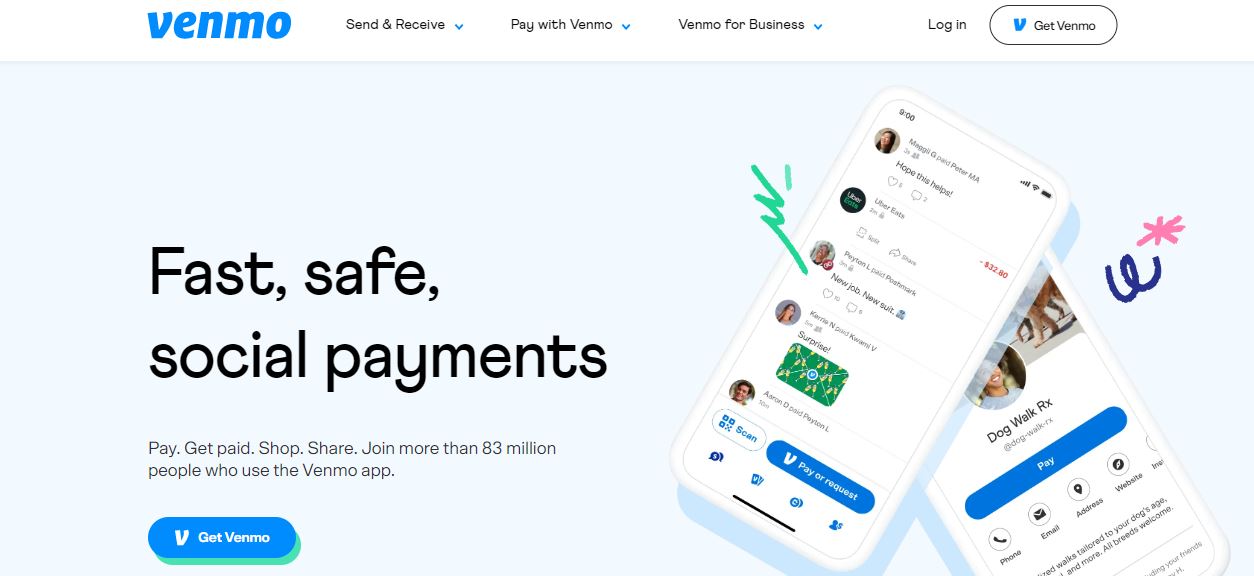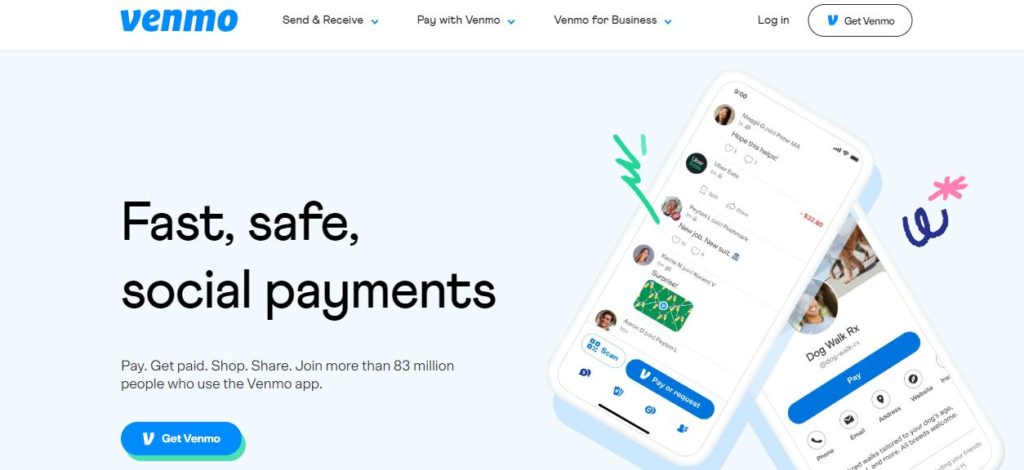
The Venmo app, which allows users to transfer money to one another’s bank accounts using their phones quickly, has gained recognition from many IT businesses in recent years.
Users of the app are not charged to transfer or receive money, but the firm makes money in various ways, including through interchange and withdrawal fees, Cash a Check and Cashback programs, and cryptocurrency fees.
In this post, we will uncover how Venmo generates its income, so keep on reading!
What Is Venmo & How does it Work?

Venmo is a peer-to-peer money transfer software, Venmo enables users to send and receive money immediately to and from friends, family, and companies. To allow consumers to pay and receive money via SMS (a short messaging service), the firm was formed in 2009. After being purchased by PayPal in 2013, the business has developed into a platform for processing various payments, including personal transfers and merchant services. There is no online account management because the software is solely for mobile devices.
Is Venmo profitable?
A 2.9 percent transaction charge for companies is how Venmo makes money. More than two million businesses accept Venmo in the US. Users who wish to withdraw money to their connected card from Venmo will also be charged a one percent fee; typically, withdrawals take one to two days.
The business produced $850 million in revenue in 2021 while managing $230 billion in transactions. Every peer-to-peer transaction on Venmo is published by default (apart from the amount), a feature that academics have proved to occasionally disclose private information about users’ lives.
Venmo Business Model
The main component of the Venmo business model is collecting fees from app users and merchants. Customers are not charged for using Venmo’s direct peer-to-peer money transfer services. Instead, the business generates revenue via affiliate relationships, check cashing, interchange, and withdrawal fees. Additionally, Venmo provides debit and credit cards through partnerships with Mastercard and Visa, allowing it to recoup interchange fees from businesses that accept these cards as payment.
The two main rivals of Venmo are its parent business PayPal, and Zelle, a different direct money transfer service that customers may use to send money electronically to friends and relatives. Despite not having as many transaction possibilities as PayPal or Venmo, Zelle is owned by a network of substantial international banks.
How Does Venmo Make Money?
Pay With Venmo
Users may utilize their Venmo account to make purchases at certain merchant partners, thanks to the Pay With Venmo functionality. Companies like Foot Locker, Forever 21, Urban Outfitters, and others are examples of partners.
A charge is added to the total order amount whenever customers pay at one of those chosen merchants. Venmo costs businesses $0.10 for each transaction plus 1.9 percent.
Interchange & Withdrawal Fees
Venmo charges businesses interchange fees when consumers use the Venmo Credit Card to make transactions and charges customers interest on credit card purchases. This charge comprises a modest fixed price and a percentage of the transaction amount.
Users of Venmo who want immediate access to cash can utilize a Venmo Debit Card to make cash withdrawals at any ATM. Customers who withdraw money using their debit card are charged a $3.00 over-the-counter withdrawal fee and a $2.50 domestic ATM withdrawal fee.
Cryptocurrency Fees
Venmo made it possible to buy and trade cryptocurrency on its platform starting in June 2021.
Customers may now transact in four different currencies in the United States: Bitcoin, Bitcoin Cash, Ethereum, and Litecoin.
Venmo generates revenue from its cryptocurrency offering through a so-called spread and transaction fees.
The spread is the difference between the market price Venmo pays its trading partner Paxos and the exchange rate shown to the user between US dollars and the crypto asset.
The spread is influenced by market factors like the US dollar’s strength. Venmo furthermore assesses a transaction fee for each buy or sell.
Venmo’s costs are often comparable to those of well-known cryptocurrency exchanges like Binance or FTX.
Instant Transfers
Users of Venmo may transfer the money instantaneously from their Venmo accounts to their bank accounts via Venmo Instant Transfers, a feature introduced in 2019. Venmo Instant Transfer funds are available within 30 minutes as opposed to the customary one to three business days it takes to transfer money to a bank account.
By collecting a charge equivalent to 1.5 percent of the amount transmitted, Venmo generates revenue through Instant Transfers. Users are subject to a minimum $0.25 quick transfer fee and a maximum $15 cost per transfer. Users can continue to use free standard electronic withdrawals.
Cash A Check
Users may cash their wages and government stimulus cheques using one of Venmo’s newest services, Cash-a-Check. Venmo assesses a fee of 1% on all payroll and government checks and 5% on all other accepted bills to the user. Reviews must be worth less than $5 or more than $5,000. Users need to have a confirmed email address, activate direct deposit, or have a Venmo Debit Card to use this service.
Cashback
When using their cards to make purchases at specific retailers, Venmo debit and credit card holders can receive cash back. Venmo encourages its cardholders to buy at particular vendors rather than other retailers by providing this discount through Dosh. In return, based on the volume of transactions and the terms of the partnership, Venmo earns a referral commission.
Summary
PayPal owns the popular money-transfer app Venmo. While charging for other associated services, including credit card settlement, ATM withdrawals, and merchant services, the company provides a free mobile application for customers to send and receive money to one another or businesses. Referrals to retailers, credit card interest, and cryptocurrency purchases result in more income.
